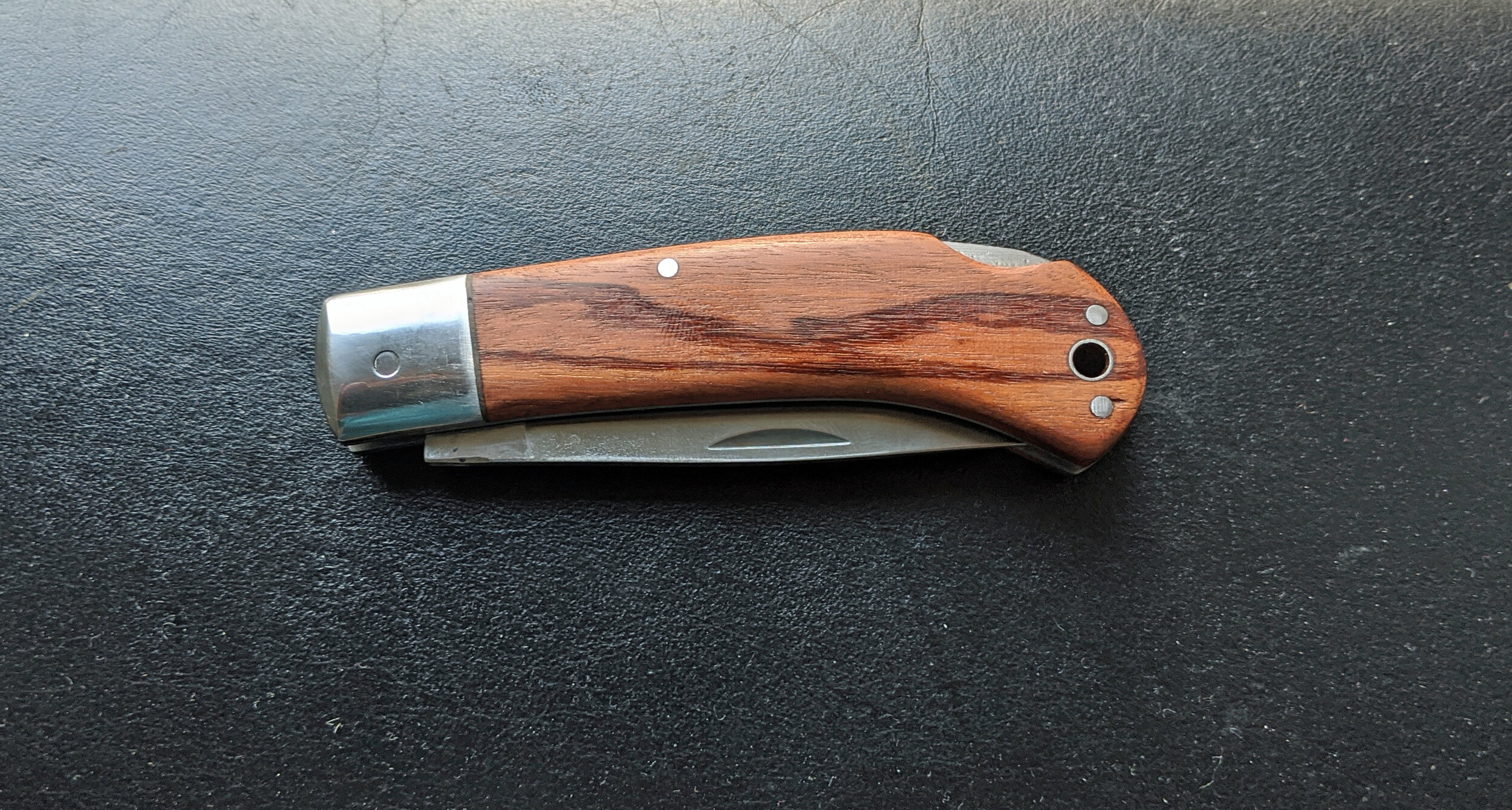MonkeyWood Folding Knife
I don’t know if I’m getting better at making these knives from kits, but I’ll chalk up another successful one. This one has scales made from Monkeywood. Yeah, I had never heard of that either, but my woodworker friend Marc Dilley sent me some scraps and the Monkeywood looked pretty good. Below is with the scales epoxied on, roughly trimmed.
Next step is to remove wood to flush with the handles, and polish the release recess on each handle half to 400 grit, because once the knife is assembled you’ll not have access to the recesses. With the recesses sanded, I drilled holes from the metal side to the wood side in each handle half, and assembled the knife parts, held in place by the pins.
Once I got to the stage shown above, I used a belt sander with 400 grit to flatten the tops of the pins, and shorten them to just barely poke out of the pin holes. From there I peened the pins down, and glued the lanyard tube in place. When peening I had shims in the base region, in the place region, and the hinge pin region, so the pieces would not get too tight.
Next I sanded off the tops of the pins and lanyard tube, and breathed a sigh of relief that all the pins were round, and tight in their holes.
I sanded the wood down flush with the top of the bolsters, with a bit of a thickening at the bottom end. Lastly, I sanded the bolsters to remove fabrication debris, and sanded the wooden handles to 400 grit, the bolsters to 1500 grit and polished using green polish compound. The result: a knife that is every bit as good as a made-in-China Walmart knife that costs $5-$15. This one was for my old climbing buddy Marc Dilley, of Marc Dilley Photography, http://marcdilley.com/




